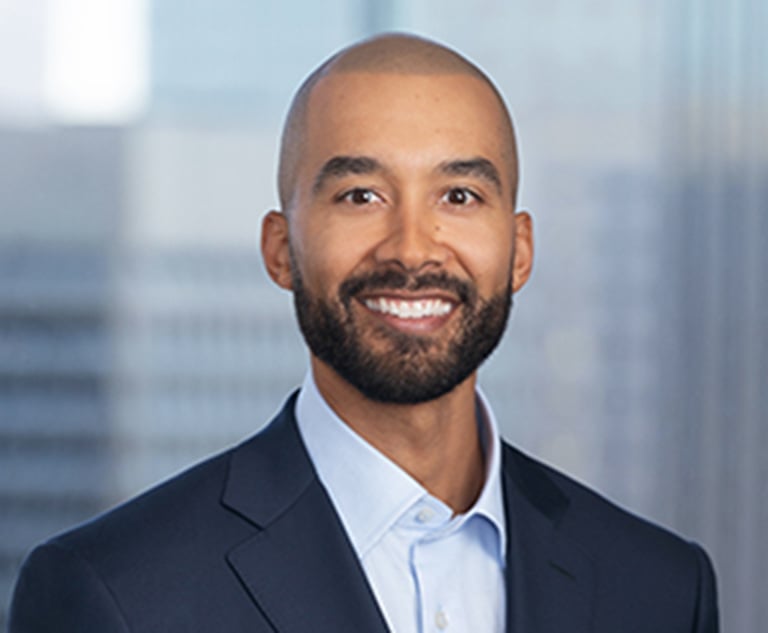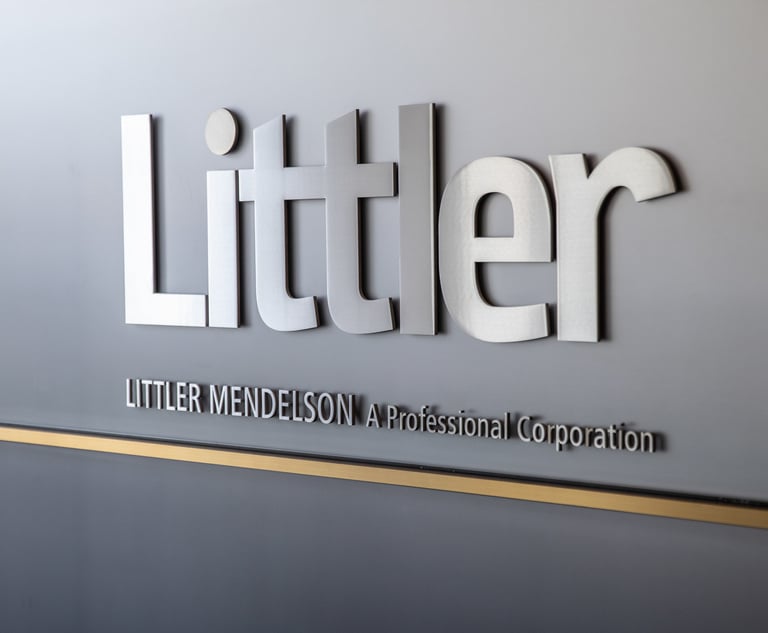Global Firm's Financial Woes May Point to Pitfalls of Rapid Lateral Growth
CKR Law, which is struggling to pay partners, now says it's taking steps to "right-size." Sources say some there have gone at least three months without regular partner draws.
May 20, 2019 at 05:45 PM
6 minute read
 Photo: Shutterstock
Photo: Shutterstock
CKR Law, founded five years ago in New York, has spent much of its short existence expanding its reach beyond the state, the country and even the hemisphere.
In January 2018 it announced its “rapid expansion” through office openings in Orange County and San Diego in California. A month later, the firm said it had added even more partners by opening offices in Philadelphia, Seattle and Wilmington, Delaware. By July it had its first Texas office. The same month, it established “strategic locations” in Estonia, Switzerland, Turkey and, in the same breath, Wyoming.
The firm now boasts at least 50 locations on five continents. But by this spring, its managing partner, Jeffrey Rinde, was sending messages to partners about why they hadn't received their draws yet, according to internal emails viewed by ALM.
CKR, which lists more than 200 lawyers on its website, faces a “cash flow crunch” and plans to make cuts, including letting go underperforming partners and reducing expenses, according to a May 10 internal email. And some partners weren't paid May 15, meaning they have gone at least three months without their anticipated partner draws, sources close to the firm told ALM.
Law firms often boast that they are in growth mode, whether by adding new offices, new partners or new practices. And while CKR asserts its cash shortfall is unrelated, its swift expansion may still serve as a warning of the potential risks that come with rapid growth through lateral additions.
To be clear, rapid lateral growth is not inherently reckless: Some successful Am Law 200 firms add laterals almost every week or open locations in far-flung locales around the world by acquiring local shops.
Kent Zimmermann, a Zeughauser Group law firm management consultant, speaking generally on the legal industry, said he doesn't see fast expansion alone as a chronic problem in the industry. But growth through unsuccessful lateral hires or adding laterals without a core strategy is a widespread problem, Zimmermann said.
Based on what he's heard from law firm leaders, only about a third of lateral partner hires, on average, are successful after 18 months. “Laterals don't work out most of the time, and if you only grow with laterals, many firms are coming to the conclusion that that's a slow, error-prone, expensive way to grow, and that's partly why you see so many firms putting mergers on the table,” Zimmermann said.
The problems stem from vetting laterals incorrectly and not having a core strategy about who to pursue and which practice areas, Zimmermann said.
It's not only about adding laterals with portable client business. If the lateral partner has his or her own book of business but isn't complementary to the firm's specific strategy or specialization, “it's pretty hard to see how that will ever work,” said David Barnard, a firm consultant at Blaqwell, also speaking generally.
Some firms aim to reach a certain head count—say 500 or 1,000 lawyers—but there's no number that suddenly makes a law firm more profitable or more successful, and there's no data to indicate that firms become more profitable as they get bigger, said Altman Weil law firm consultant Tom Clay. “It's that kind of thinking that could get people in trouble,” Clay said about firms setting arbitrary head count goals.
“There is some merit in having more critical mass if your clients need it but … there's no statistics or history to tell you being a 100 lawyers versus 400 versus 600 is a benefit to you” or helps a law firm's profits, Clay said. “You need to match your size with your market.”
For its part, CKR disputes that its speedy growth rate caused its financial struggles this year. “We do not believe our rapid growth materially contributed to the cash flow circumstances intimated in the press,” said Rinde, the managing partner, in a statement to ALM on Friday.
Rinde's statement only vaguely addressed what he described as the “root cause” of the firm's situation: He said it related to ”non-recurring events which caused certain contractually committed revenues owed to the firm to be deferred” beyond the first quarter this year.
“We have already taken appropriate steps to remedy this issue and prevent any recurrence. We expect these delayed revenues will be realized during the course of 2019 and expect to achieve our 2019 revenue and profit goals,” Rinde said.
'Right-sizing'
A look at CKR's lateral announcements shows a wide array of practices of its new hires in the last two years, including immigration, tax, real estate, blockchain, finance, IP, bankruptcy and litigation. Many were formerly solo practitioners or practiced at small firms. Overall, the firm announced the addition of about 58 lawyers in 2018 alone.
 Screenshot of CKR Law website
Screenshot of CKR Law websiteRinde's statement Friday said that although he believes the firm's lateral success rate “exceeds industry standards,” CKR is now “right-sizing, in part, by terminating relationships with underperforming partners.” CKR, he said, will also revise its arrangements with “certain other attorneys to be more consistent with their individual performance.”
CKR's internal emails this month acknowledge that some attorneys “failed to bill hundreds of thousands of dollars' worth of time,” money that could have been used to pay some outstanding draws.
Retaining unproductive nonequity partners is an industrywide phenomenon. A new Altman Weil study showed firm leaders believed 51% of nonequity partners are not sufficiently busy. That's an “egregious” number, Clay said.
The survey also showed that more than half of firm leaders thought overcapacity was diluting their firms' profitability, yet the vast majority of firm leaders said they would pursue growth through lateral hires in 2019.
As ALM reported last week, many partners at CKR haven't been paid at least two months of their regularly anticipated draws. May 15 for some marked their third month without a regular draw, multiple sources said.
Rinde's statement to ALM obliquely addresses this, noting “some contract partners may be disappointed with the firm's decisions concerning their ongoing relationship with CKR, including timing and payment of draws” and “the adherence to firm policies as a pre-condition to payment.”
But despite the financial struggles and its plans to reduce expenses, CKR is still in talks to add more laterals. Rinde told ALM that the firm will evaluate lateral opportunities, including individual partners, practice groups or firms. “Certain lateral partners and groups have recently joined the firm and we expect other prospects to join in the near term,” Rinde's statement said. He said CKR has “no outside debt.”
“We have received assurances from the vast majority of our partners of their commitment to the firm and our continued success,” Rinde' statement added. “We believe our underlying business model is sound.”
Jack Newsham contributed to this report.
This content has been archived. It is available through our partners, LexisNexis® and Bloomberg Law.
To view this content, please continue to their sites.
Not a Lexis Subscriber?
Subscribe Now
Not a Bloomberg Law Subscriber?
Subscribe Now
NOT FOR REPRINT
© 2025 ALM Global, LLC, All Rights Reserved. Request academic re-use from www.copyright.com. All other uses, submit a request to [email protected]. For more information visit Asset & Logo Licensing.
You Might Like
View All

Three Akin Sports Lawyers Jump to Employment Firm Littler Mendelson

Brownstein Adds Former Interior Secretary, Offering 'Strategic Counsel' During New Trump Term
2 minute read
Trending Stories
- 1'Something Else Is Coming': DOGE Established, but With Limited Scope
- 2Polsinelli Picks Up Corporate Health Care Partner From Greenberg Traurig in LA
- 3Kirkland Lands in Phila., but Rate Pressure May Limit the High-Flying Firm's Growth Prospects
- 4Davis Wright Tremaine Turns to Gen AI To Teach Its Associates Legal Writing
- 5'Battle of the Experts': Bridgeport Jury Awards Defense Verdict to Stamford Hospital
Who Got The Work
J. Brugh Lower of Gibbons has entered an appearance for industrial equipment supplier Devco Corporation in a pending trademark infringement lawsuit. The suit, accusing the defendant of selling knock-off Graco products, was filed Dec. 18 in New Jersey District Court by Rivkin Radler on behalf of Graco Inc. and Graco Minnesota. The case, assigned to U.S. District Judge Zahid N. Quraishi, is 3:24-cv-11294, Graco Inc. et al v. Devco Corporation.
Who Got The Work
Rebecca Maller-Stein and Kent A. Yalowitz of Arnold & Porter Kaye Scholer have entered their appearances for Hanaco Venture Capital and its executives, Lior Prosor and David Frankel, in a pending securities lawsuit. The action, filed on Dec. 24 in New York Southern District Court by Zell, Aron & Co. on behalf of Goldeneye Advisors, accuses the defendants of negligently and fraudulently managing the plaintiff's $1 million investment. The case, assigned to U.S. District Judge Vernon S. Broderick, is 1:24-cv-09918, Goldeneye Advisors, LLC v. Hanaco Venture Capital, Ltd. et al.
Who Got The Work
Attorneys from A&O Shearman has stepped in as defense counsel for Toronto-Dominion Bank and other defendants in a pending securities class action. The suit, filed Dec. 11 in New York Southern District Court by Bleichmar Fonti & Auld, accuses the defendants of concealing the bank's 'pervasive' deficiencies in regards to its compliance with the Bank Secrecy Act and the quality of its anti-money laundering controls. The case, assigned to U.S. District Judge Arun Subramanian, is 1:24-cv-09445, Gonzalez v. The Toronto-Dominion Bank et al.
Who Got The Work
Crown Castle International, a Pennsylvania company providing shared communications infrastructure, has turned to Luke D. Wolf of Gordon Rees Scully Mansukhani to fend off a pending breach-of-contract lawsuit. The court action, filed Nov. 25 in Michigan Eastern District Court by Hooper Hathaway PC on behalf of The Town Residences LLC, accuses Crown Castle of failing to transfer approximately $30,000 in utility payments from T-Mobile in breach of a roof-top lease and assignment agreement. The case, assigned to U.S. District Judge Susan K. Declercq, is 2:24-cv-13131, The Town Residences LLC v. T-Mobile US, Inc. et al.
Who Got The Work
Wilfred P. Coronato and Daniel M. Schwartz of McCarter & English have stepped in as defense counsel to Electrolux Home Products Inc. in a pending product liability lawsuit. The court action, filed Nov. 26 in New York Eastern District Court by Poulos Lopiccolo PC and Nagel Rice LLP on behalf of David Stern, alleges that the defendant's refrigerators’ drawers and shelving repeatedly break and fall apart within months after purchase. The case, assigned to U.S. District Judge Joan M. Azrack, is 2:24-cv-08204, Stern v. Electrolux Home Products, Inc.
Featured Firms
Law Offices of Gary Martin Hays & Associates, P.C.
(470) 294-1674
Law Offices of Mark E. Salomone
(857) 444-6468
Smith & Hassler
(713) 739-1250









